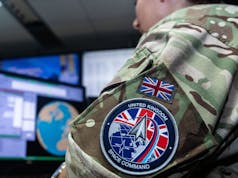The Royal Air Force has launched a pioneering scheme to recycle components from retired Tornado jets and turn them into parts for Britain’s next generation of combat aircraft, according to a press release.
Known as “Tornado 2 Tempest,” the initiative grinds down surplus Tornado parts into a powdered metal feedstock used in 3D printing, creating new components for the Tempest programme.
The recycled material—mainly high-quality steel, aluminium and titanium—offers potentially lighter, stronger, and longer-lasting parts than traditionally manufactured alternatives.
It also aims to “save taxpayer money, reduce the UK’s reliance on global supply chains,” and bolster the domestic defence industry as “an engine for growth,” as stated in the press release.
The project was spearheaded by Defence Equipment and Support’s Defence Recycling & Disposals Team, in partnership with the Ministry of Defence Future Combat Air System team, Rolls-Royce, and Additive Manufacturing Solutions Limited (AMS).
The press release cites Maria Eagle, Minister for Defence Procurement and Industry, saying:
“The Tornado 2 Tempest project highlights the creativity, ingenuity and innovation defence employs in our approach to national security. By working with key industry partners, we can deliver savings, reduce reliance on global supply chains and ensure our Armed Forces have the very best kit to keep our country safe.”
During trials, key components—such as a 3D-printed nose cone—have been successfully fitted onto Rolls-Royce’s Orpheus test engine. The press release quotes Andrew Eady of Rolls-Royce describing the project as “bold, exciting and innovative,” while AMS Director Robert Higham applauds the partnership for “allowing us to showcase our capability to deliver game-changing circular economy processes and parts in Defence.”
The press release notes that the programme has already sustained or created new jobs at AMS, and more positions are expected to be added as the technology expands into other areas of defence procurement.
The initiative, funded in part by UK Strategic Command’s Defence Support Organisation, also demonstrates the MoD’s drive for a “circular economy” approach, reducing waste and extending the life cycle of critical materials.
At the UK Defence Journal, we aim to deliver accurate and timely news on defence matters. We rely on the support of readers like you to maintain our independence and high-quality journalism. Please consider making a one-off donation to help us continue our work. Click here to donate. Thank you for your support!














Excellent idea, to recover high quality metals and not relying completely on new manufacture. Similar to the Typhoon Tranche 1 Reduce to Produce programme.
Wonder if they can do this with retired Air Marshalls?
At least the hard points are being reused as ground launchers.
It is a great idea. It works on so many levels – engineering, economic, Balance of Trade, environmental, etc. As a relatively small island nation with limited natural resources (little in the way of oil, gas and rare earth minerals), we need to innovate our way to success.
And given the state of our defence budget, we really need to shift our focus to smart, effective but relatively low cost solutions. I personally think we buy far too much overly-expensive US stuff (which also puts us at mercy of the US$ exchange rate) and that we need to produce much more ourselves.
What’s the minimum we need to buy from them as things stand? F35Bs and Trident missiles? Other systems could eventually be substituted as they come up for replacement (and we could even work with the France to replace the Trident missiles at some point!!).
Cheers.
The thing is now that this technology and the enabling business model is up and running it can be applied to civilian supply chains as well. As we import a lot of our smart phones and commuters we should be looking at ways to recover and up cycle the valuable materials with in those high tech items, not send them back to China for recycling as we used to / still do..?
There was an article on the news a few months ago about a new way to separate and recover valuable metals from electronic waste. It seems that some proteins can latch onto these metals. Work is underway at Penn State University and at Zurich. I think it was the Zurich team that was on the news as they demonstrated Whey protein’s ability to latch onto gold from commuter ground down commuter motherboards. The Penn State team appear to have come with a way to extract rare earth metals. So opportunities will develop. One reason why I think pushing forward on the recycling / environmental agenda could pay off in the long term is that lots of currently under utilised tech and business models are being developed all over the place…
Cheers CR
Will that be all the Tornado Gate Guards removed then. 😏